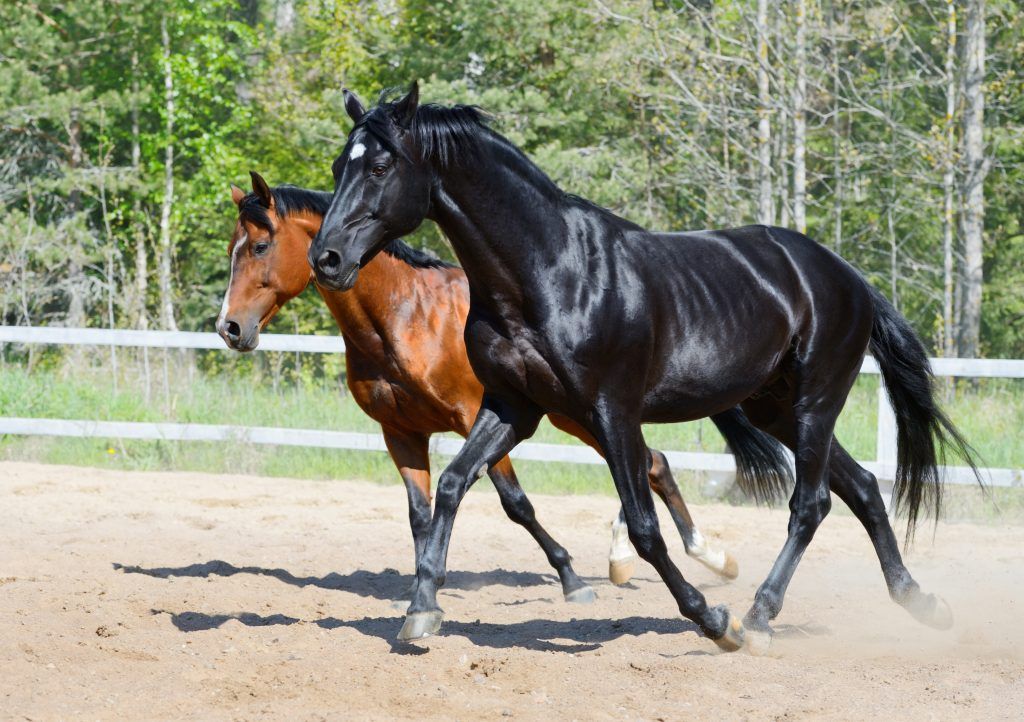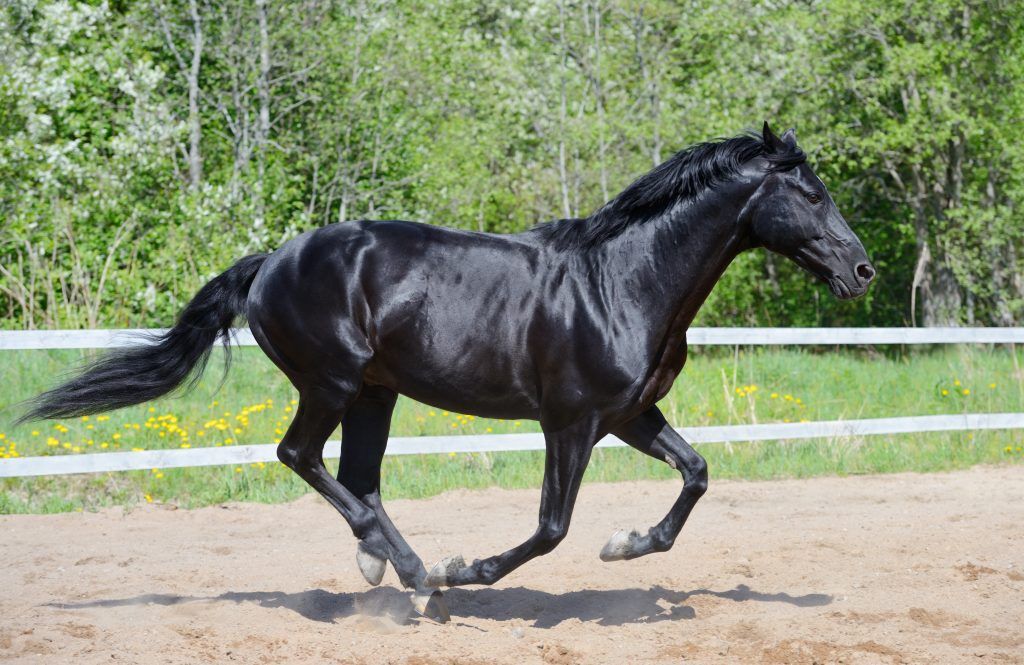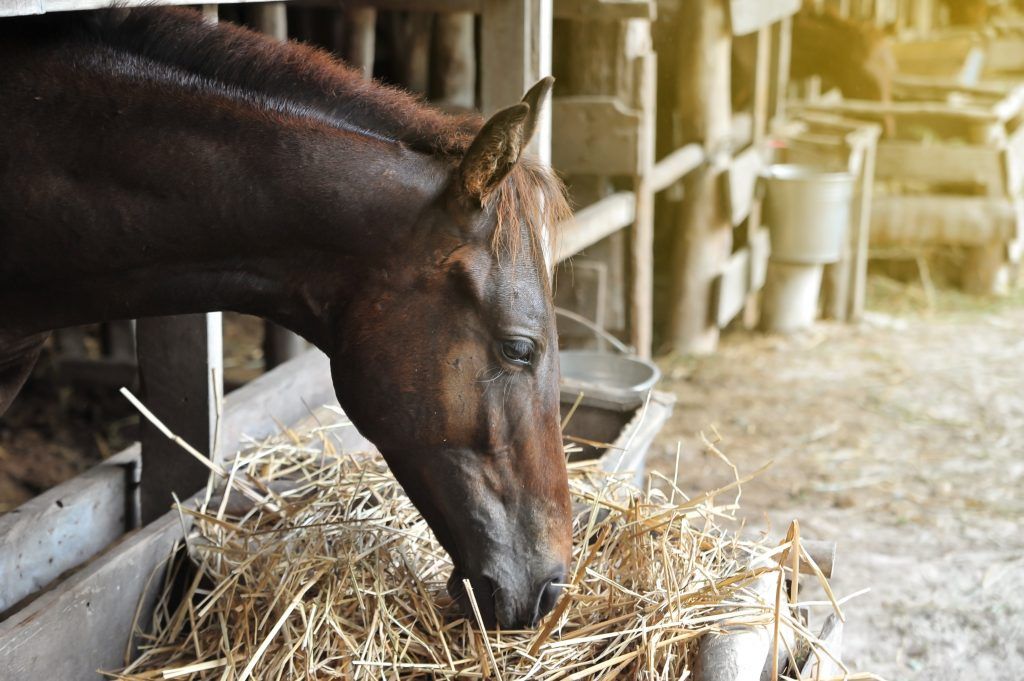Description of horses of the Russian horse breed
The horse was domesticated by humans several millennia ago. At that time, these animals were used as a pulling force or a means of transportation. Today, the need for horses has dropped dramatically, thanks to technology. These animals are increasingly used in sports and parades. One of the best types of horses for such events is the Russian riding horse breed.

Characteristics of the Russian horse breed
There are more than one medal on the account of these graceful horses, but caring for them also requires large physical and financial costs. This breed is distinguished by a docile disposition and a good mind, but it will not be trained under an inexperienced rider.
Features of breeding
The breed of Russian riding has gone through decline and has been restored anew through the efforts of scientists. For the first time this type of racers appeared in the 17th century at the breeder of Count Orlov-Chesmensky. Russian horsemen were bred on the basis of the Rostopchinsky and Orlovsky breeds. Most of this species was destroyed during the Second World War, since the horses were not taken out of the territory of occupied Ukraine in time. By the end of the war, horse breeders had only 2 stallions and several purebred mares, which were presented at an exhibition in St. Petersburg. It was only by 1978 that the Russian horse was able to be recreated in the form in which it is known now. The Starozhilovsky stud farm continues today to improve this breed.
The Russian horse has certain standards. The pedigree book of the animal is in Russia.
The Russian horse is classified as a sporting breed. It was this type of racers that at one time represented the USSR at international competitions. In the modern world, stallions are used for dressage and triathlon. Due to its high level of intelligence, the breed lends itself well to training, however, only experienced riders obey.
Exterior
When recreating the Russian horseback as a lost breed of horses, breeders were able to maintain the golden mean between the physical parameters of the Friesian type of horses and the harmonious physique of the Akhalkentin. This breed has strict standards, among which are the following:
- The height of the horse is 160-164 cm, and the weight is up to 500 kg.
- The head of the stallions is of medium size, prominent, the nostrils are well developed.
- Large eyes of predominantly dark colors.
- The neck of Russian riders is characterized by a curved shape, thanks to which the stallion maintains balance.
- The animal's ribcage is sunken, the back is curved and ends in a strong croup.
- The horse's legs are powerful, with pronounced joints.
- The hooves are high, have a strong horny plate.

The appearance of a Russian riding horse
The color of the animal is a characteristic feature of the breed. This type of horse is distinguished by a black or chestnut shade of wool. Horses with light color or spots are not allowed to be divorced. The mane and tail are rather sparse, the hair falls off evenly.
The Russian riding horse in the photo can be found in various publications for breeders, since this breed is considered the unofficial leader of domestic horse breeding.
Character
One of the main qualities of the Russian horseback is its calmness and friendliness towards people. The high level of intelligence and physical parameters allow the use of stallions in dressage and triathlon. Horsemen are perfectly trainable and have good endurance. These horses are also used by the mounted police in some countries due to their obedience to commands.
However, at the same time, the horses have a sensitive disposition, and only an experienced rider can cope with them. The Russian horse stallion will not be aggressive towards beginners, but under an inexperienced person may not want to learn.

Features of the character of the horse
Among the most common character traits of the Russian horseback are the following:
- waywardness;
- good mind;
- calmness;
- endurance.
Due to the structure of the body, such a horse prefers active pastime and can get bored in the stall. Also, the Russian horse becomes attached to its rider and may not recognize the other. In no case should you yell at your pet or punish it physically. This breed is very susceptible to violence and may become unresponsive to humans.
During the training of the Russian horse, riders often use verbal commands that the animal can easily recognize.
Home content
Sporting breeds require good living conditions and daily careful grooming. Unlike heavyweights, riders need a large stall and good feed. The box for stallions should be 5 square meters. m per individual.
Drafts, strong odors or loud noises are not allowed in the animal's stable. Temperature and humidity levels should be stable regardless of the season.
Also, Russian horsemen should be taken to pastures in the summer, where the horses replenish their supply of vitamins.
It is extremely important to comply with the health standards for keeping horses:
- Clean the stall at least once a day.
- Flush the entire stable twice a week.
- Ventilate the room daily.
- When changing seasons, disinfect the stable with special preparations.

Maintenance and care
Horses should also be cared for daily. Horses of this species require dressage, otherwise their muscles and joints will begin to atrophy. In addition, any injury requires medical intervention, otherwise a sore spot will torment this breed until old age.
For sports breeds, horseshoes are cast individually for the hooves. For show jumping, the horseshoe should sit perfectly on the horn plate and be as light as possible.
The harness must also be tailor-made for the performing horse. It is necessary to check that the saddle does not rub the animal's back, and the bit does not crumble its teeth.
The diet
Sports horse breeds require an individually tailored diet. If the diet is unbalanced, then the animal simply will not be able to gain the required amount of muscle mass for competition.
The daily diet of the Russian horseback should include:
- grain or compound feed - 4 kg;
- meadow hay - 4 kg;
- juicy feed - 2 kg;
- wheat straw - 1 kg;
- vitamin and mineral supplements - in accordance with the proportions of the horse.
Hay and compound feed should make up the majority of the diet and should not be replaced with vegetables or fruits. Chopped wheat or rye straw should be added to oats. Thanks to cutting, the stallions actively salivate, which helps to chew food. Pure straw should not take more than 10% of the daily ration. This low-calorie product can clog an animal's stomach.

Meals should consist of hay and compound feed
It is important to monitor the condition of the hay and succulent feed. Poor drying, mold, or musty foods can cause serious digestive ailments.For sports breeds, you should choose the highest quality products. Clover hay, which is mixed with common herbs, would be a good addition to the main diet.
Among vegetables, the following foods stand out for horse feeding:
- carrot;
- apples;
- pumpkin;
- beet.
Vegetables must be peeled and rinsed from the ground before eating. Carrots and pumpkin should also be cut into large pieces. Juicy food in the animal's diet should not occupy more than 20%, otherwise the horse may become upset.
Vitamins and minerals must be present in the daily diet. For this, fish oil, bone meal and grass meal should be added to the feed. Lack of calcium in the body of the Russian horse can affect the musculoskeletal system of the animal. This leads to bone deformation and joint disease.
Horses consume a lot of water, so the animal's drinker should be clean and full. Dehydration for horses is much more dangerous than hunger: without water, a stallion can die or remain disabled.
Conclusion
The Russian riding horse breed is notable for its good physical condition and high level of intelligence. This type of racers is classified as a sports breed, they are used for dressage and triathlon. The Russian horse is not suitable for agricultural work, its body structure is not suitable for plowing or grazing.
In addition to sporting events, black horses can be found in the mounted police or at parades. Despite the decline of the breed, scientists managed to revive it, and now the Russian riding horse is popular all over the world.

